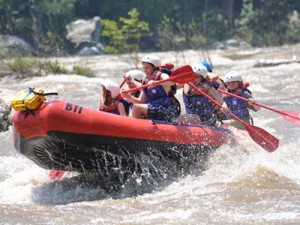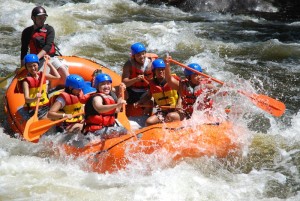What to Expect Your First Time Whitewater Rafting
The rush that comes with whitewater rafting is palpable, even through photos and videos you’ve seen. Now, you want to get your adrenaline pumping by suiting up and taking to the rapids yourself.
Of course, before you embark on your first whitewater rafting trip, you want to know a little bit more about what you’re getting yourself into — pictures can only say so much, after all. The following are five examples of what you can expect.
1. The Rapids Won’t Be Too Intense
Your rafting guide won’t take newbies through the strongest rapids on their first ride. Instead, they’ll choose a path with rapids that are low to moderate on the classification scale. You certainly won’t be bored on your trip, but you won’t be flying out of the raft in the middle of rough, swirling waters, either.
2. But You’ll Still Want to Listen to Your Guide’s Advice
Those low-scale rapids are still rapids. Your guide has your best interests in mind at all times, so listen when they tell you to paddle a particular way or to cease paddling altogether. You can also expect to wear a life preserver, which should stay on the entire trip. You never know when the river will lurch and cause you to fall into the water — your life preserver will help you get back on board the raft safely.
3. Get Ready to Get Wet
You’ll be on low-scale rapids, rafting with a guide and wearing a life preserver. Still, you should be mindful of your outfit when you head out on your whitewater expedition — wearing the wrong clothes or shoes could leave you feeling incredibly soggy and uncomfortable.
Start by slipping into shoes with good traction that you don’t mind getting wet. You can wear old tennis shoes, though water shoes or sandals with thick soles also work. Some avid rafters wear bathing suits under their clothes, too. Make sure the outfit you wear is something you feel OK about getting wet or dirty — extra points for wearing air-wicking fabric or something else that dries quickly. And, be sure to pack a second outfit to change into when you’re done.
4. Water Will Be Wilder In …
Whitewater rafting is at its peak in early spring and fall, so plan your trip accordingly if you want a serious adrenaline-pumping experience. That’s because mountain water begins to melt around this time, adding speed and depth to the rivers down which you’ll be floating. Every destination will be different, though: Choose your top whitewater rafting destinations and find out when is the best time of year to visit.
5. Plan to Spend Your Entire Day There
There’s a common misconception that rafting trips only take an hour or two. This may be true of river tubing expeditions, for example, wherein you float down a calm, rapid-free river in an inner tube. But rafting trips take much longer.
Your trip will probably last anywhere between three and six hours, depending on the length of river you’ll cover. On top of that, you’ll have to travel to the river, go over safety tips and instructions, suit up in a life jacket, change and return home, so it’s likely you’ll be spending your whole day on the water.
With this information in mind, you should feel more prepared to take your first whitewater rafting trip. So, grab your water shoes, buckle up your life jacket and grab a paddle — it’s time to hit the rapids.














